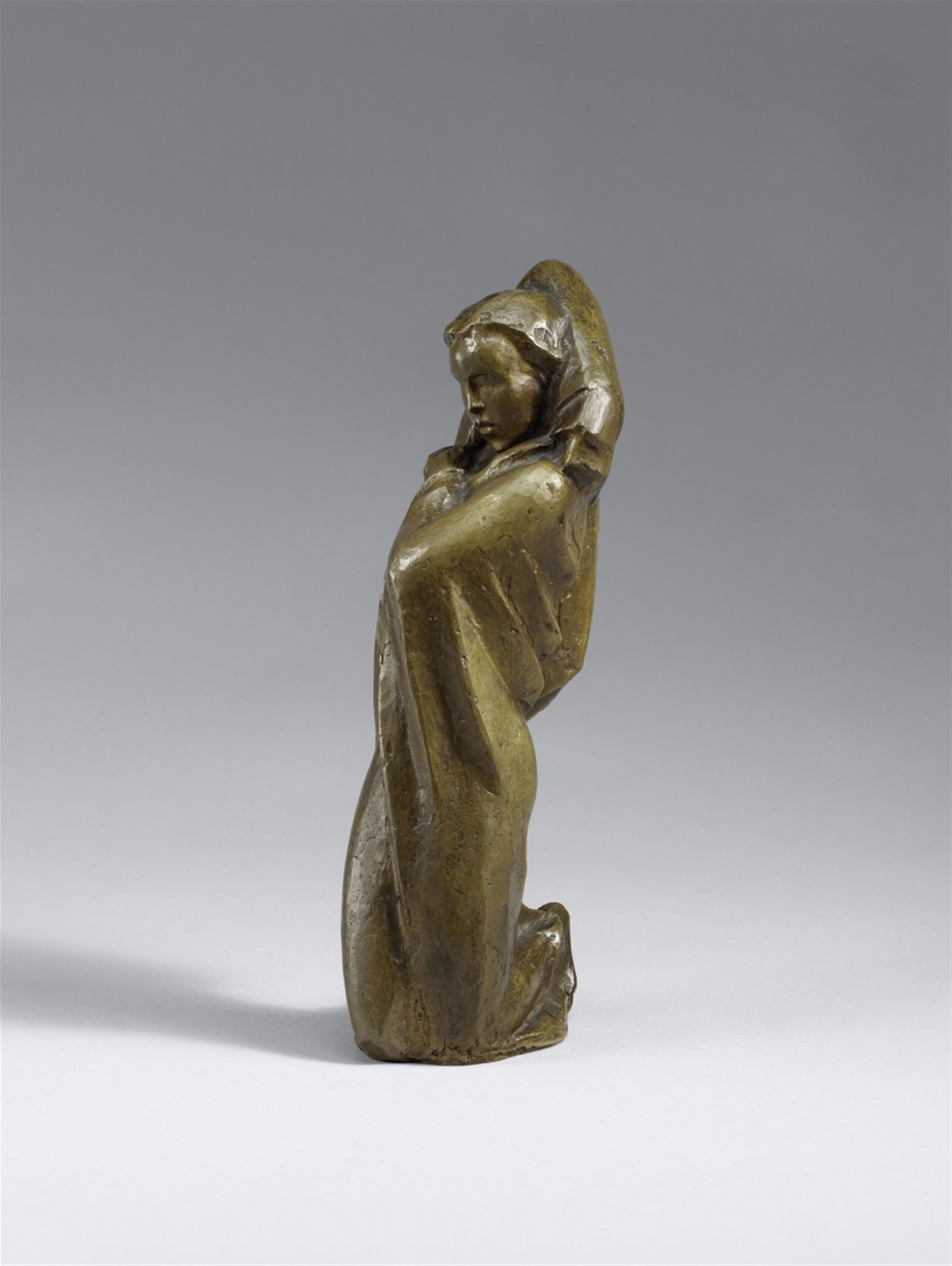Georg Kolbe
Nonne (Kleine Nonne)
1923
Bronze Height 28.2 cm Monogrammed 'GK' above the robe's hem on the back. The exhibition of a first bronze in 1924 as well as four bronzes from the early 1930s and six posthumous casts are verifiable. According to Berger, this cast is from the Berlin foundry Noack and was probably cast posthumously. - Greenish-yellowish patina.
In its radical break with the conventions of the performing arts, the expressive dance of the early 20th century was filled with an emancipatory spirit similar to that of works by the avant-garde of the visual arts. It is no surprise that this new form of dance served artists working in very diverse art forms as an important source of inspiration, and these included the dance enthusiast Georg Kolbe.
A great number of Kolbe's drawn studies and sculptures were created on the basis of pieces by famous dancers, such as Gret Palucca, Edith von Schrenck or Charlotte Bara (born Bachrach, 1901-1986), who is hardly known today. Bara had her debut in 1919 at Max Reinhardt's theatre in Berlin and caused a sensation with her performances, particularly during the years immediately after the war. Her slow, inward dance theatre was greatly appreciated in artistic circles. Thus, in a letter to Karl Ernst Osthaus's wife Gertrud, the sculptor and graphic artist Moissey Kogan expressed the lasting impression it made on him: “Charlotte Bachrach is a true priestess and guardian of art. She does not come from the world of the music hall; she comes to provide form to our yearnings. She may not even be aware of the forces lying dormant within her. I tell you she is the holiest and deepest of anything I have ever encountered.” (cited in: Ursel Berger, Georg Kolbe und der Tanz, Berlin 2003, p. 60). The daughter of the German-Jewish silk merchant Paul Bachrach attended a convent school and converted to Catholicism in 1928. Her pieces with titles like “Auferstehung” or “Im Kloster” were defined by a mystical religiosity between veneration and ecstasy. The Christian connotation of Kolbe's title also derives from Bara's spiritual self-concept and, according to Ursel Berger, it is to be understood more in terms of a nickname (see Ursel Berger, Georg Kolbe: Leben und Werk, Berlin 1990, p. 264).
In the course of 1923 this highly expressive figure would serve Kolbe as the model for a larger version in oak (Berger 57), which is now preserved in the collection of Berlin's Georg-Kolbe-Museum.
Catalogue Raisonné
Berger 56
Certificate
With an expertise by Ursel Berger, Berlin, dated 30 March 2016
Provenance
Family possession, North Rhine-Westphalia (since three generations)
Literature
Georg Kolbe (Introduction Richard Scheibe), 100 Lichtdrucktafeln, Marburg 1931, plate 36; Ludwig Justi, Georg Kolbe, Berlin 1931, illus. 13
Exhibitions
Berlin 1924 (Akademie der Künste), Kollektivausstellung, Kolbe-Raum

